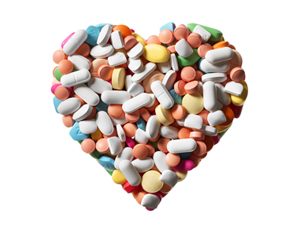A Cardiologist’s Guide to Smart Statin Use
Updated: Feb. 10, 2021
Our holistic heart doc weighs in on the benefits and risks of using statins to lower blood cholesterol levels.

My patient Ted was 45 and athletic and a fairly healthy eater, but he smoked a few cigarettes a week. When I told him that his total cholesterol was high, at 230 mg/dl (a desirable level is considered 200 or lower), he asked, “Do I really need to take a statin?” I mentally reviewed the cholesterol guidelines that two major cardiology societies recently published. Ted wouldn’t have been a clear-cut candidate for the cholesterol drugs under the old rules, but according to the new ones, he was. Ted was concerned—and as an integrative cardiologist who prefers to prescribe veggies rather than drugs, so was I. There’s no doubt that statins save lives. But as the controversial guidelines call for millions more Americans to start statins, it’s important to understand the benefits and risks.
The Science of Statins
Over the past 20 years, high-quality scientific trials revealed that the drugs may cut stroke and heart attack risk by half. Based on this research, the guidelines indicated four groups—which may include one billion people worldwide—who should lower their blood cholesterol levels with statins:
• People with heart disease (prior heart attack, stent, etc.)
• People ages 40 to 75 with diabetes
• People with LDL cholesterol over 190 mg/dl
• People without heart disease but who—according to a new algorithm of age, total cholesterol, HDL, blood pressure, and smoking—have a ten-year risk greater than 7.5 percent of developing it. (Ted’s was 8 percent.)
My Biggest Concern
Doctors often started patients at low statin doses. Under the new guidelines, we’re urged to use moderate- or high-intensity doses from the get-go. These may increase side effects like muscle aches or weakness, memory loss, and increases in blood sugar. Another issue: My patients often take other cholesterol-lowering drugs (such as Zetia or Niaspan) along with statins, but the new guidelines emphasize the benefits of statins alone. I’m wary of stopping these drugs to increase statins. I plan to prescribe statins if needed at low to moderate doses—and teach lifestyle changes at high intensity.
Cut Cholesterol Naturally
In the statin debates, we’re overlooking that you can dramatically lower your cholesterol by changing what you eat and how much you move. (For example, Canadian scientists developed the portfolio diet, which emphasizes plant sterols, soluble fiber, nuts, and soy; it lowers cholesterol by 30 percent on average, about as much as a low-dose statin.) While some high-risk people will need statins no matter what, I encourage borderline patients like Ted to make lifestyle changes first. Cut back on sugar and meat. Eat more produce, whole grains, low-fat dairy, fish, legumes, and nuts. Keep saturated fat to 5 to 6 percent of calories (about 12 grams for a 2,000-calorie daily diet), and avoid trans fats. Aim for about 40 minutes of moderate to vigorous exercise three or four times a week.
If You Need a Statin
First ask yourself: Have I made every effort at lifestyle changes? For Ted, quitting smoking, along with diet and exercise tweaks, reduced his risk such that he no longer qualified for statins. If moderately high LDL cholesterol or the risk calculation alone determines that you might require statins, talk to your doctor. More plants and fewer animal saturated fats and trans fats may allow many people to avoid drugs. And there’s nothing controversial about that.
JOEL K. KAHN, MD, is a clinical professor of medicine at Wayne State University and the director of cardiac wellness at Michigan Healthcare Professionals. He is also the author of The Holistic Heart Book.















